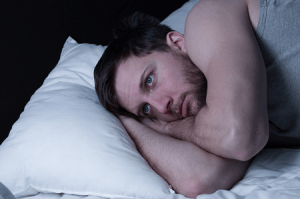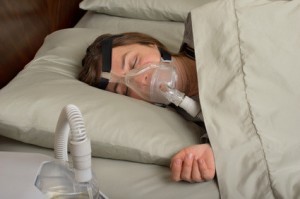Sleep Apnea (Obstructive, Central, Complex) Information
What is sleep apnea?
Sleep apnea is a condition where breathing ceases and restarts repeatedly during sleep. Apnea is where breathing stops temporarily. Sometimes in sleep apnea the air inflow is severely decreased but does not stop altogether and this is known as sleep hypopnea. There are three types of sleep apnea – obstructive, central and complex – which denotes the mechanism behind the cessation of breathing.
How common is sleep apnea?
Obstructive sleep apnea is the most common type and is estimated to affect as many as 4% of men and 2% of women in the United States. However, it is believed that about 90% of cases remain undiagnosed. Overall obstructive sleep apnea is becoming more prevalent in both children and adults. Central sleep apnea is uncommon and affects less than 1% of the American population.
Types of Sleep Apnea
There are three types of sleep apnea – obstructive, central and complex.
Obstructive Sleep Apnea
Obstructive sleep apnea (OSA), the most common type, arises when the throat muscles relax and the soft tissue of the airways collapses thereby blocking airflow.
Central Sleep Apnea
Central sleep apnea is where the signals to the breathing muscles are not transmitted by the brain. There is no obstruction of the airways, just the cessation of breathing.
Complex Sleep Apnea
Complex sleep apnea is a combination of both obstructive sleep apnea and central sleep apnea. It is also known as treatment emergent sleep apnea.
Causes of Sleep Apnea
The causes of sleep apnea varies among the different types. With obstructive sleep apnea being so much more common than central sleep apnea, the focus on the causes and risk factors is more often on obstructive sleep apnea.
The causes of obstructive sleep apnea can be broadly divided into genetic, structural and non-structural factors. Certain genes have been implicated and genetic factors would also explain the risk associated with family history of sleep apnea. Structural factors relate to the skull anatomy that may increase the risk of nasal obstruction and therefore obstructive sleep apnea. This includes a deviated septum, nasal polyps, elongated palate and uvula and enlarged adenoids and tonsils which is more common in children.
Non-structural factors are important considerations in the rising prevalence of obstructive sleep apnea seen these days. Many of these factors are modifiable and due to a modern lifestyle. It includes:
- Obesity
- Thick neck circumference
- Alcohol consumption
- Sedative use
- Tobacco smoking
Men are generally at higher risk. Obstructive sleep apnea may also be seen in postmenopausal women. Generally the risk increases with advancing age. Certain medical conditions like hypothyroidism, acromegaly, neurological diseases and a stroke may also increase the risk of obstructive sleep apnea.
Sometimes central sleep apnea may occur with no identifiable cause and this is known as idiopathic or primary central sleep apnea. When it occurs with other medical conditions or identifiable factors then it is referred to a secondary central sleep apnea.
Central sleep apnea is associated with a wide range of risk factors, including:
- Acromegaly
- Diabetes
- Drugs like opiates and substances that suppress the central nervous system (CNS)
- Heart failure
- Hypothyroidism
- Kidney failure
- Muscular dystrophy
- Myasthenia gravis
- Parkinson’s disease
- Stroke
Complex sleep apnea is usually seen in the backdrop of CPAP machine usage. This device maintains pressure to prevent collapsing of airway tissue during sleep. However, in the early stages of CPAP device usage, central sleep apnea may occur.
Signs and Symptoms
The signs and symptoms of obstructive and central sleep apnea are largely the same. There are not only symptoms when sleeping but symptoms may also arise during the course of the day as a consequence of the sleep apnea.
The signs and symptoms of sleep apnea include:
- Episodes of cessation of breathing as noticed by a partner. The patient is usually not aware of these episodes.
- Awakening suddenly from sleep with shortness of breath.
- Snoring which is usually more prominent in obstructive sleep apnea but may also occur with central sleep apnea.
- Changes in mood – irritability and depression.
- Difficulty concentrating.
- Morning headache.
- Dry mouth.
- Morning sore throat.
Often the symptoms of sleep apnea are not obvious and many patients may present with insomnia in that they find difficulty to stay asleep and also experience excessive daytime sleepiness. Even in milder cases where most symptoms are very mild or absent, a person often reports feeling like that they did not have a good quality sleep for unknown reasons. In children especially this may be seen as ADHD (attention-deficit hyperativity disorder).
Treatment of Sleep Apnea
The choice of treatment of sleep apnea depends on a host of causes and risk factors. Underlying medical conditions that contribute to sleep apnea should be appropriately treated and managed, and risk factors should be removed where possible.
Dietary and lifestyle factors are also important options in milder cases when risk factors like obesity are present. In more severe cases and instances where sleep apnea is adversely affecting a person’s health and life, devices or surgery may need to be considered for treatment.
Devices
Ventilation devices like continuous positive airway pressure (CPAP) machines are widely used for moderate to severe sleep apnea. It maintains a higher pressure in the airway to prevent it from collapsing and is very effective in managing sleep apnea. Other similar devices include expiratory positive airway pressure (EPAP), bilevel positive airway pressure (BPAP) and adaptive servo-ventilation (ASV).
Surgery
Surgical intervention is necessary when the underlying condition can only be managed surgically or where the sleep apnea persist and a pressure device may either not be effective or is not an option. These procedures are intended to correct structural anomalies that contribute to sleep apnea, create a new air passage or insert implants. Other procedures like weight loss surgery may help correct sleep apnea indirectly.
Medication
Certain drugs can stimulate breathing and may therefore be prescribed for central sleep apnea. Medication is not usually able to treat or relieve obstructive sleep apnea directly. It is important that drugs which may be contributing to sleep apnea, like sedatives and opiates, be discontinued under a doctor’s supervision.
References:







